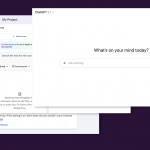
Linux has earned a reputation of being the most secure operating system, but it still has its security flaws.
Deploying a secure operating system is an important starting point for every business, but even the most secure networks can be invaded. Like the myth of the invulnerable Mac, there is a misconception that Linux is completely secure. But, in fact, we have to admit that no operating system is entirely immune to security threats.
Linux has gained more popularity among users over the past few years, as well as more attention from attackers. Although the open-source operating system is secure by design, as its adoption continues to soar, there is an increased risk of external and internal threats. Most Linux distributions come with advanced security tools, but security incidents have proved that these are not enough anymore to prevent data leakage.
Linux Security Concerns
One of the latest Linux vulnerabilities is “Dirty Pipe”, found and explained in detail by security researcher Max Kellerman of CM4all. “Dirty Pipe” affects endpoints running Linux with a kernel version 5.8 or higher and includes a variety of devices running Android 12 and Linux. This vulnerability allows an unprivileged user to overwrite data in read-only files and was severe enough for the Cybersecurity and Infrastructure Security Agency (CISA) to issue a warning about it.
Another newly discovered vulnerability present in every major Linux distro is “PwnKit“. This allows any unprivileged user to gain root access to their target, and it’s been hiding in plain sight for more than a decade.
Besides external threats, internal ones are also common and extremely harmful – regardless of the operating system. This means that it is crucial for organizations to make a difference between the security of an operating system and the security of the data created, which is edited and handled by people and saved on the operating system. Human error and insider threats are some of the main reasons for data loss and data theft, which can and do still occur even in a “secure” environment.
For years, Linux was primarily used by smaller, more tech-centric groups, but nowadays, several sectors, including education, government, nuclear, and aviation, rely extensively on it. It is also worth keeping in mind that, with the rise of BYOD, more and more companies have mixed OS networks. These include machines running on Linux and either Microsoft Windows or macOS (and sometimes even on all three operating systems).
Boosting Security with Data Loss Prevention
Data security has been a hot topic for years now and privacy regulations proliferate (GDPR, CCPA, LGPD, and so on). In this context, organizations using Linux operating systems and those with multi-platform environments can enhance their security posture with Data Loss Prevention (DLP) solutions, safeguarding both sensitive data and intellectual property.
Controlling Data in Motion and at Rest
With a Data Loss Prevention Software, organizations can control sensitive information by monitoring data transfers through various exit points. These include portable storage devices, smartphones, and cloud services like Skype, Dropbox, or Google Drive. In this way, they can protect data from threats that attempt to compromise data integrity. Therefore, it is critical to control data use within and outside the company.
Although the number of Linux vulnerabilities and security risks are on the rise, the number of available security solutions is limited. Cross-platform solutions, such as Endpoint Protector by CoSoSys, help secure sensitive data and prevent data loss, data leaks, or data theft on an organization’s entire network and whether it’s a Windows, macOS, or Linux endpoint. The solution provides Content-Aware Data Loss Prevention, Device Control, and eDiscovery for various Linux versions and distributions, including Ubuntu, OpenSUSE, RedHat, and CentOS.
A DLP solution can help organizations using Linux to manage removable devices connected to the workstations and monitor in real-time all transfers of data to authorized devices. Thus they can prevent users from taking unauthorized data outside the company or copying potential harmful files on storage devices.
Another vital feature of DLP products is data discovery, which helps businesses identify sensitive data stored on employee endpoints to protect it or securely remove it. Data discovery can minimize both internal and external attack vectors: unauthorized employees storing confidential data on their computers and outsiders who manage to bypass the network defense and try to get access to the company’s records. If confidential information is discovered on endpoints, administrators can take remediation actions like encrypting or deleting data at rest.
Safeguarding Sensitive Data and Intellectual Property
The best DLP providers on the market can give organizations using Linux OS granular control over sensitive data leaving the company’s network. These solutions safeguard not only customers’ Personally Identifiable Information (PII), like names, phone numbers, or credit card numbers, but also the intellectual property of the company, such as source code or copyrighted content.
Endpoint Protector also comes with predefined compliance profiles that help companies meet the requirements of data protection regulations such as the GDPR, CCPA, HIPAA, or PCI DSS easier. Companies can control and block the transmission of files depending on the file type and formats; filters can be created based on predefined and custom content, regular expressions, and more.
Looking for a Data Loss Prevention solution? Check our DLP for Linux.
Frequently Asked Questions
With a Data Loss Prevention (DLP) software, you can set-up policies on Linux endpoints, control exit points, and detect and block sensitive data in your organization. DLP can help you protect confidential business information and employees’ records against data breaches on Linux machines (various distributions like Ubuntu, RedHat, CentOS, OpenSUSE), taking you step by step through the policies building. Deploy a DLP solution and stop users from uploading, sending, and copying/pasting confidential data from Linux workstations to the cloud, to online applications and to portable storage devices.
See how Endpoint Protector DLP can secure your data on Linux endpoints
Learn more about Data Loss Prevention (DLP)
Find out how to reduce security risks with a cross-platform DLP.
Check out our DLP for Linux
Download our free ebook on
Data Loss Prevention Best Practices
Helping IT Managers, IT Administrators and data security staff understand the concept and purpose of DLP and how to easily implement it.
















